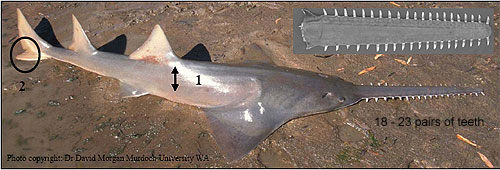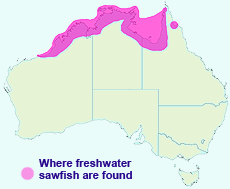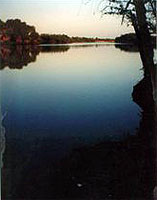Freshwater sawfish are more vulnerable to recreational line fishing during the dry season months when juvenile animals are restricted to drying water holes of major rivers. During this time there is a reduced amount of prey items in the water hole and freshwater sawfish will actively seek out dead baits or strike at lures.
Size: maximum reported size 700cm, commonly caught in rivers up to 250cm.
Diet: prawns, macrobrachium and fish
Fisheries: Commercial trawl, gill net and long line fisheries. Recreational line fishery and bait collection using small mesh cast nets and seine nets. Indigenous net and harpoon fishing. Foreign illegal gill net and line fishing.
Utilisation: Meat and fins; rostrum trophy collectors; collection of live aquarium specimens. |




